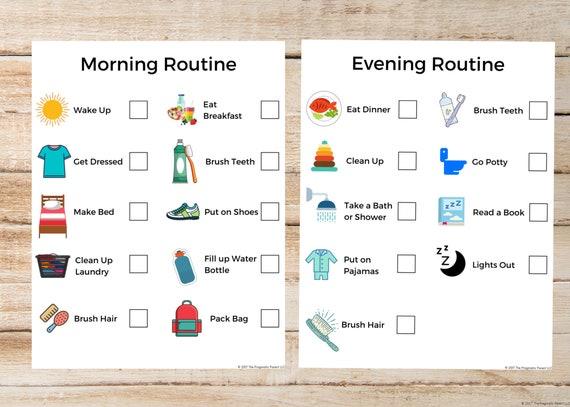How Stressful Environments Affect Your Pet’s Behavior

In today’s fast-paced world, stress is a familiar companion for many of us. But have you ever considered how the hustle and bustle of everyday life might be affecting your furry friends? Pets, much like humans, are susceptible to the pressures and changes in their environments. Whether it’s a loud construction site next door, a new addition to the family, or even just a change in routine, these stressors can significantly influence your pet’s behavior. In this article, we will explore the various ways stressful environments impact our pets, shedding light on the subtle signals they may be sending and offering insights into how we can create a more harmonious and stress-free atmosphere for our beloved companions. Join us as we delve into the fascinating world of pet psychology and learn how to help your pets thrive in any environment.
Understanding the Sources of Stress in Your Pets Environment
Just like humans, pets are highly sensitive to their surroundings, and various factors can contribute to their stress levels. Identifying these stressors is crucial for maintaining their well-being. Noise pollution, for instance, can be a significant stress inducer. Loud sounds from traffic, construction, or even a bustling household can make pets anxious and uneasy. Similarly, lack of personal space can lead to stress, especially in multi-pet households where competition for territory or resources might arise.
- Changes in Routine: Pets thrive on consistency. Any alteration in their daily schedule, such as feeding times or walking routes, can cause distress.
- Environmental Enrichment: A monotonous environment lacking stimulation can lead to boredom and stress. Introducing toys, playtime, and interactive activities can alleviate this.
- Social Interactions: Overexposure to unfamiliar people or animals can overwhelm pets, while a lack of socialization can lead to loneliness.
By paying attention to these elements, pet owners can create a more harmonious environment, reducing stress and promoting healthier behavior in their furry companions.

Behavioral Changes: Recognizing the Signs of Stress in Pets
Pets, much like humans, can exhibit a variety of behavioral changes when exposed to stress. Recognizing these signs early can help mitigate potential health issues and improve their quality of life. Common indicators of stress in pets include:
- Changes in appetite: A stressed pet might eat significantly less or more than usual.
- Altered sleeping patterns: Increased sleep or restlessness can be a red flag.
- Excessive grooming: Over-grooming or licking can indicate anxiety, often resulting in bald patches or skin irritation.
- Aggression or withdrawal: A once-friendly pet may become irritable or hide more often.
- Vocalization: Increased barking, whining, or meowing can signal distress.
Understanding these signs can help pet owners take proactive steps to create a more comforting environment, ensuring their furry companions feel safe and secure. It’s crucial to address these behaviors promptly, as prolonged stress can lead to more severe health problems.

Practical Tips to Create a Calmer Environment for Your Furry Friend
Creating a peaceful space for your pet can make a world of difference in their overall well-being. Here are some practical tips to help you design a soothing environment:
- Designate a Safe Zone: Ensure your pet has a quiet corner or room where they can retreat to when feeling overwhelmed. This space should be free from loud noises and have their favorite toys and a comfortable bed.
- Use Calming Scents: Consider incorporating pet-safe aromatherapy with scents like lavender or chamomile, which are known for their calming properties. Be cautious with essential oils, ensuring they are safe for your pet.
- Play Soft Music: Background music or white noise can help drown out stressful sounds. Choose calming playlists or classical music specifically designed for pets.
- Maintain a Routine: Consistency can be incredibly comforting. Try to keep feeding, walking, and playtimes on a regular schedule to provide structure and predictability.
Remember, every pet is unique, so it might take some experimentation to find what works best for yours. By making these small changes, you can significantly reduce your pet’s stress and improve their quality of life.

The Role of Routine and Stability in Reducing Pet Stress
In the hustle and bustle of daily life, our furry companions can often feel overwhelmed. Just like humans, pets thrive in environments where they can predict what’s coming next. Establishing a consistent routine not only helps manage their stress levels but also fosters a sense of security. Pets, particularly dogs and cats, benefit immensely from knowing when they’ll be fed, walked, or given attention. This predictability can transform their behavior, reducing anxiety-driven actions such as excessive barking or scratching.
- Regular Feeding Times: Setting specific times for meals helps pets anticipate nourishment, preventing food-related anxiety.
- Designated Play Periods: Regular playtime offers mental stimulation and physical exercise, which are crucial for reducing stress.
- Consistent Sleep Schedules: Ensuring your pet has a quiet, comfortable place to rest at the same time each day supports their natural sleep cycles.
Stability extends beyond just a daily schedule; it includes the environmental factors within the home. Maintaining a calm atmosphere and avoiding sudden changes in household dynamics can make a significant difference. When pets are accustomed to a stable routine and environment, they are more likely to feel relaxed and display positive behaviors.



